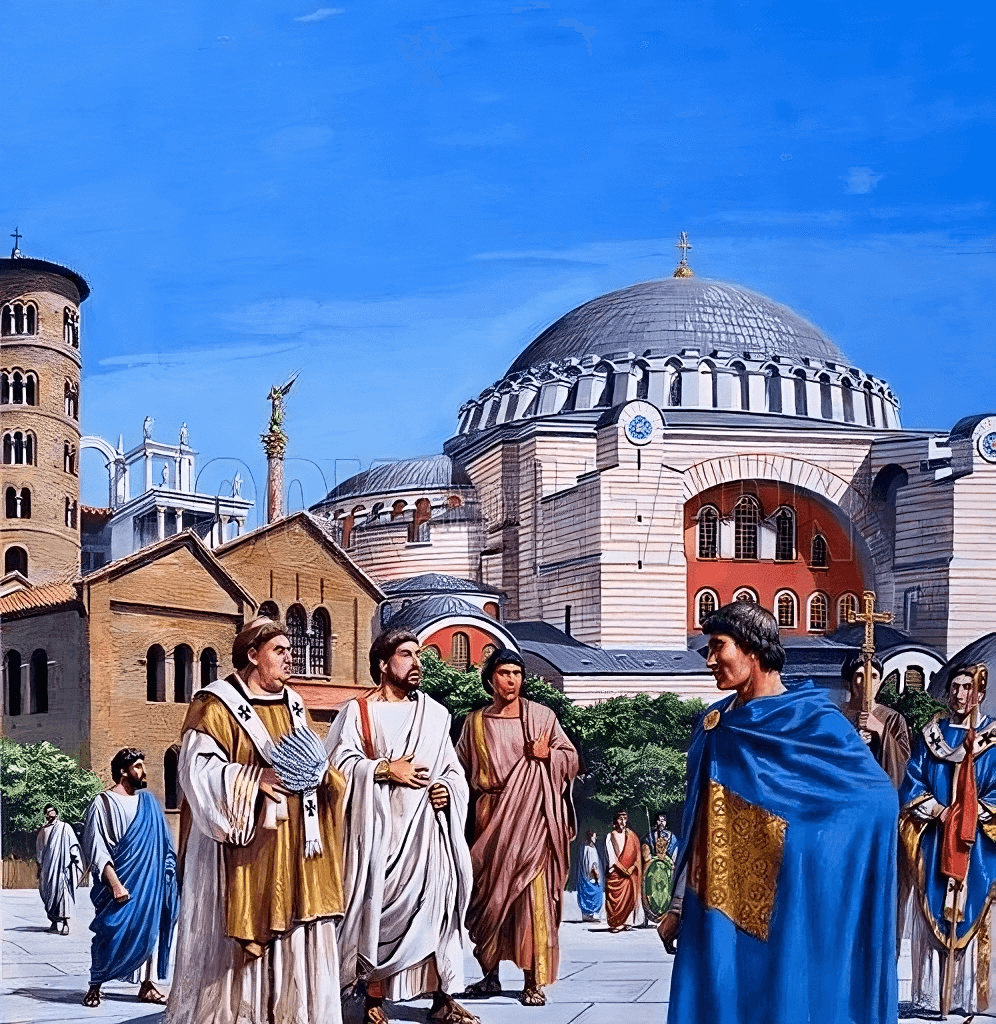Life during the Byzantine Empire, which spanned from the 4th century AD to the 15th century AD, was characterized by a blend of Roman, Greek, and Christian influences.
The Byzantine Empire was centered around Constantinople (modern-day Istanbul), and it encompassed a vast territory that included parts of Eastern Europe, the Mediterranean, and the Middle East. Life in Byzantine times varied depending on social class, geographic location, and historical context, but there are several general aspects that can be highlighted:
Urban Life: Constantinople was one of the largest and wealthiest cities in the world during Byzantine times, boasting impressive infrastructure, including aqueducts, bridges, and roads. It was a bustling center of trade, culture, and politics, with a diverse population comprising people from various ethnicities and backgrounds. Other urban centers within the empire also thrived, serving as hubs of commerce, administration, and culture.
Social Hierarchy: Byzantine society was hierarchical, with the emperor at the top followed by aristocrats, bureaucrats, and clergy. Below them were merchants, artisans, and peasants. Slavery was also prevalent, although it declined over time. Social mobility was limited, but individuals could rise through the ranks through education, military service, or political connections.
Economy: The Byzantine economy was primarily agrarian, with agriculture serving as the backbone of the empire. Farmers cultivated crops such as wheat, barley, olives, and grapes. Trade was also significant, facilitated by Constantinople's strategic location at the crossroads of Europe and Asia. The empire traded goods such as silk, spices, textiles, and precious metals with neighboring regions and beyond.
Religion: Christianity played a central role in Byzantine life, serving as both a unifying force and a source of division. The Byzantine Empire was officially Christian, with the emperor as the head of the Church. The Byzantine Orthodox Church wielded considerable influence over society, shaping religious practices, education, and cultural norms.
Culture and Education: Byzantine culture was a synthesis of Roman, Greek, and Christian traditions. The empire preserved and transmitted classical knowledge, literature, and art, while also producing its own distinctive works. Byzantine scholars made significant contributions to fields such as philosophy, theology, history, and science. Education was valued, and schools and universities flourished in urban centers.
Military and Defense: The Byzantine Empire faced numerous external threats throughout its history, including invasions by barbarian tribes, Islamic armies, and rival states. The Byzantine military, which included professional soldiers known as the Byzantine army and navy, played a crucial role in defending the empire's borders and expanding its territory.
Overall, life in Byzantine times was complex and dynamic, characterized by a rich tapestry of cultural, economic, political, and religious influences that left a lasting legacy on the history of Europe and the Mediterranean world.









